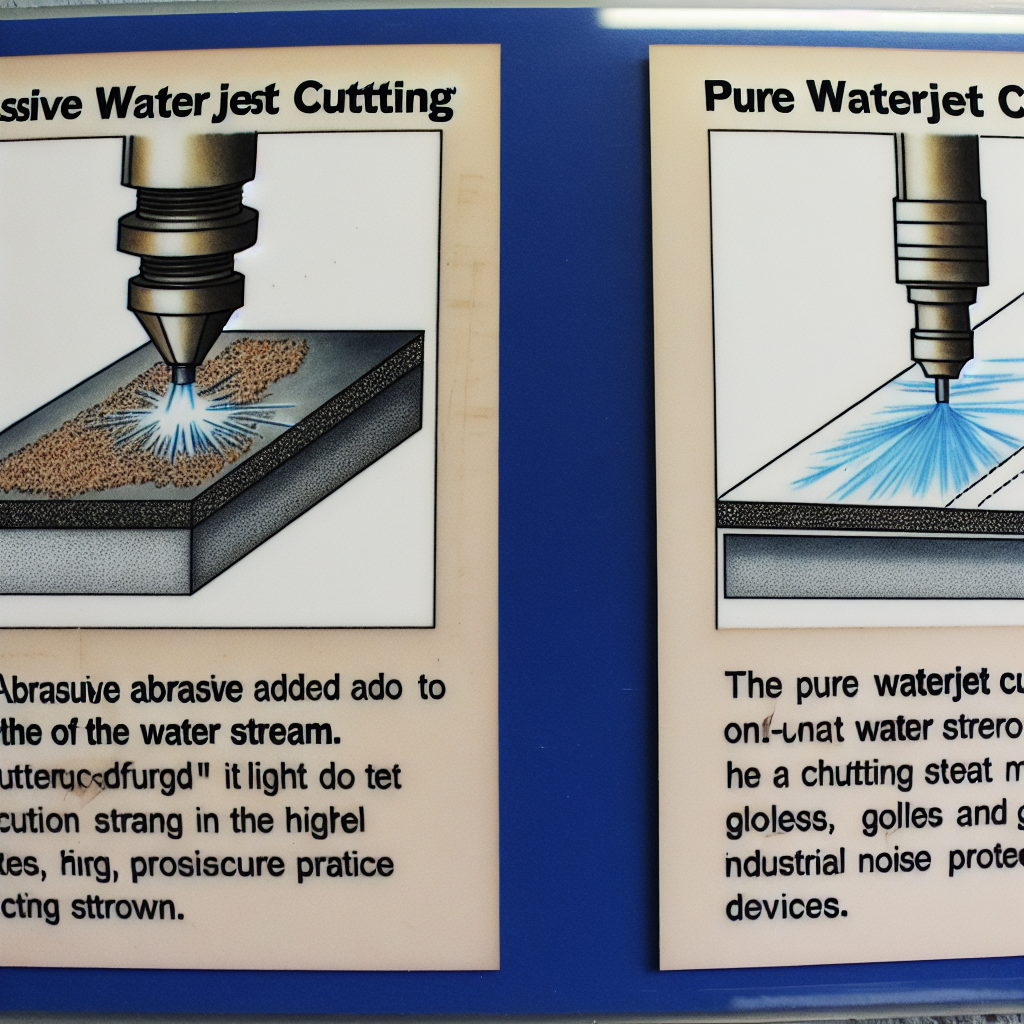
In the realm of sheet metal cutting technology, the debate between Abrasive and Pure Waterjet Cutting continues to captivate industry professionals and enthusiasts alike. Understanding the intricate differences and advantages of each method is crucial in determining which one reigns supreme in the world of precision cutting.
The evolution of Waterjet Cutting Technology dates back to the early 20th century, where the concept of using high-pressure water for cutting materials first emerged. As technology progressed, the introduction of Abrasive Waterjet Cutting revolutionized the industry by incorporating abrasive particles into the water stream to enhance cutting capabilities. Over time, advancements in Pure Waterjet Cutting emerged, emphasizing the use of high-pressure water alone for cutting various materials with precision and efficiency.
Abrasive Waterjet Cutting involves the meticulous mixing of abrasive particles with high-pressure water to create a powerful cutting force. The Intensifier Pump and Cutting Head play essential roles in maintaining the pressure needed for precise cutting, ensuring optimal cutting speed and accuracy.
Pure Waterjet Cutting utilizes high-pressure water alone to achieve clean and precise cuts, highlighting the benefits of non-abrasive cutting methods.
When comparing the cutting speeds of Abrasive and Pure Waterjet Cutting, various factors come into play. The inclusion of abrasive particles in the cutting process can impact the speed of Abrasive Waterjet Cutting, while Pure Waterjet Cutting typically offers faster cutting speeds. The type of material being cut also plays a significant role in determining cutting efficiency, showcasing the versatility and adaptability of each cutting method.
Precision and accuracy are paramount in sheet metal cutting, and both Abrasive and Pure Waterjet Cutting methods excel in delivering intricate designs and precise cuts. The tolerance levels in sheet metal cutting serve as a crucial factor in determining the effectiveness of each method, emphasizing the importance of precision and accuracy in achieving desired outcomes.
The compatibility of Abrasive and Pure Waterjet Cutting with different materials opens up a world of possibilities for various applications. Abrasive Cutting is ideal for tougher materials that require additional cutting power, while Pure Waterjet Cutting shines when working with more sensitive materials that require a gentler touch. Understanding the advantages and suitability of each method for different materials is essential in maximizing cutting efficiency.
Costs A detailed cost analysis of Abrasive Waterjet Cutting reveals the investment required for maintenance and operation, showcasing the long-term benefits and potential drawbacks of this method. In contrast, Pure Waterjet Cutting offers a more cost-effective solution with lower maintenance requirements, highlighting the financial advantages of opting for a non-abrasive cutting approach. By comparing the maintenance and operating costs of both methods, companies can make informed decisions on which cutting method aligns best with their financial objectives.
Real-life examples of Abrasive Waterjet Cutting demonstrate the effectiveness and precision of this cutting method in various industries. Successful applications of Pure Waterjet Cutting showcase the versatility and adaptability of this non-abrasive approach in achieving optimal cutting results. Industry preferences and success stories highlight the widespread adoption and recognition of both cutting methods, underscoring the importance of selecting the right cutting technique for specific applications and material requirements.
In conclusion, the debate between Abrasive and Pure Waterjet Cutting unveils the unique advantages and considerations of each method in sheet metal cutting technology. By summarizing key points and recommendations for choosing between the two methods, companies can make informed decisions that align with their cutting needs and objectives. Looking towards future trends in sheet metal cutting technology, advancements in cutting methods continue to push the boundaries of innovation, paving the way for enhanced precision and efficiency in the world of cutting technology.